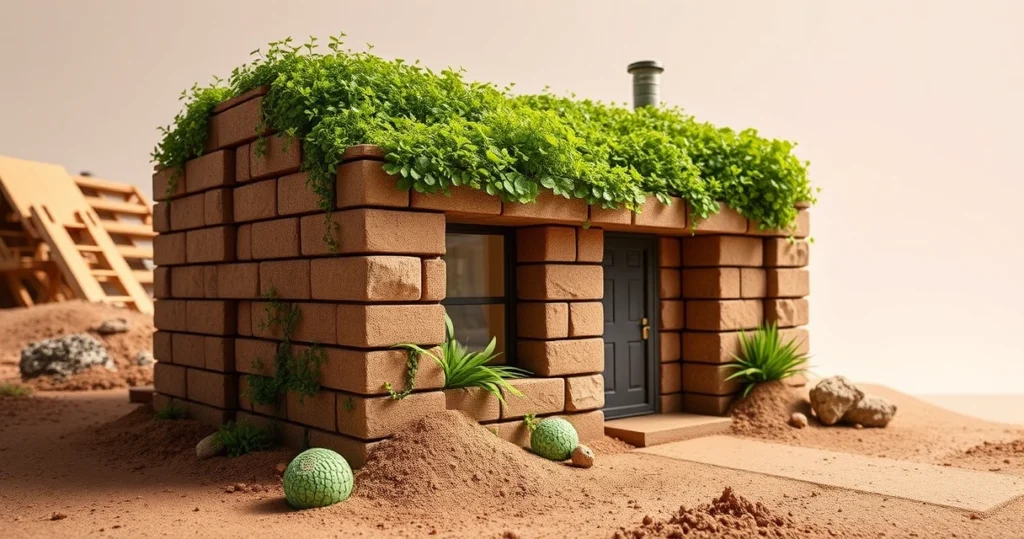As humanity sets its sights on Mars as the next frontier for exploration and habitation, innovative solutions are being sought to make living on the Red Planet a reality. Among the groundbreaking advancements in this area is the development of biofabricated “living bricks.” This revolutionary concept harnesses the potential of biomaterials to create sustainable construction solutions using resources found on Mars. By utilizing the planet’s own materials, scientists aim to address some of the fundamental challenges of building habitats on Mars while promoting eco-friendly practices.

In this article, we will delve into the science and implications behind living bricks, highlighting their potential for sustainable construction on Mars. We will explore the biofabrication process, the types of biomaterials utilized, and the broader applications of this technology, including the potential for creating furniture with Martian resources. By understanding these concepts, we can appreciate how advances in bioengineering may pave the way for a new era of construction in extraterrestrial environments.
The Concept of Biofabrication in Construction
Biofabrication is a cutting-edge field that merges biology and engineering to create materials through biological processes. This approach is particularly relevant in the context of Mars, where traditional construction methods would be impractical due to the planet’s harsh environment and the difficulty of transporting conventional building materials from Earth.
Understanding Biomaterials
Biomaterials are substances that are derived from living organisms and are capable of functioning in harmony with biological systems. In the case of living bricks, these materials are engineered to have certain properties that allow them to thrive in Martian conditions while providing structural integrity. This includes the ability to withstand extreme temperatures, radiation, and the unique atmospheric composition of Mars.
The Biofabrication Process
The process of biofabrication involves several steps, including the cultivation of microorganisms or plant cells, the selection of growth media, and the eventual formation of solid structures. In the context of creating living bricks, scientists can use Martian regolith (the layer of loose material covering solid bedrock) as a primary resource. This not only minimizes the need for transporting building materials from Earth but also promotes a self-sustaining ecosystem on Mars.
Advantages of Living Bricks for Martian Construction
The use of biofabricated living bricks offers numerous advantages for constructing habitats on Mars. Here are some key points:
- Sustainability: Living bricks are made from locally sourced materials, drastically reducing the carbon footprint associated with transporting resources from Earth.
- Adaptability: These bricks can be engineered to adapt to the Martian environment, ensuring that they can withstand temperature fluctuations and other challenges.
- Minimal Resource Use: The biofabrication process can utilize Martian regolith and other available resources, ensuring that construction is efficient and environmentally friendly.
- Potential for Self-Healing: Some biofabricated materials can have self-healing properties, allowing structures to repair themselves over time, further increasing their longevity.
Applications Beyond Construction: Furniture and More
Interestingly, the potential of biofabricated materials extends beyond just bricks for building homes. Scientists have proposed that these materials can also be used to create furniture and other essential items for living spaces on Mars. This opens up a world of possibilities for designing functional and sustainable interiors.
Furniture from Martian Resources
Using biofabricated materials, scientists can develop a range of furnishings that not only serve practical purposes but are also aesthetically pleasing. Chairs, tables, and storage units made from living bricks can be designed to be lightweight yet durable, making them ideal for Martian habitats. Moreover, the ability to create furniture on-site reduces the need for transporting heavy materials from Earth, further enhancing sustainability.
Creating a Martian Ecosystem
The integration of living bricks into Martian habitats could also lead to the development of a more sustainable ecosystem. By incorporating plants and other biological systems within the structure, it is possible to create a self-sustaining environment that supports human life. This could include green walls, air-purifying systems, and even food production, all of which contribute to the overall well-being of inhabitants.
Challenges and Future Directions
While the concept of living bricks is promising, there are still several challenges to overcome before this technology can be fully realized on Mars. Some of these challenges include:
- Environmental Testing: Extensive testing is required to ensure that living bricks can withstand the harsh Martian conditions.
- Scale of Production: Developing efficient methods for mass-producing living bricks using Martian resources is crucial for large-scale construction projects.
- Integration with Existing Technologies: Finding ways to integrate living bricks with other construction technologies and methods will be essential for seamless building processes.
- Long-Term Viability: Understanding the long-term durability and maintenance needs of biofabricated materials in a Martian environment is vital.
Frequently Asked Questions (FAQ)
1. What are living bricks made from?
Living bricks are biofabricated materials created using local Martian resources, primarily Martian regolith, along with microorganisms or plant cells that can thrive in the Martian environment.
2. How do living bricks benefit sustainable construction on Mars?
Living bricks reduce the need for transporting building materials from Earth, utilize local resources, and can be engineered for durability and adaptability to Martian conditions, promoting sustainable practices.
3. Can living bricks be used for purposes other than construction?
Yes, living bricks can be used to create furniture and other functional items, promoting a self-sufficient living environment on Mars.
4. What are the environmental challenges of using living bricks on Mars?
While living bricks are designed to be sustainable, they must be tested for their ability to withstand extreme temperatures, radiation, and the unique atmospheric conditions of Mars.
5. What is the future of biofabrication in space exploration?
The future of biofabrication in space exploration looks promising, with ongoing research aimed at improving the materials and processes used for creating sustainable habitats not just on Mars, but potentially on other celestial bodies as well.
Conclusion
As scientists continue to explore the potential of biofabricated living bricks, the vision of sustainable construction on Mars becomes increasingly attainable. By leveraging the resources of the Martian environment and integrating advanced bioengineering techniques, we can redefine the possibilities for human habitation beyond Earth. The implications of this technology extend beyond construction, offering innovative solutions for furniture, ecosystems, and self-sustaining habitats. While challenges remain, the development of living bricks represents a significant step towards humanity’s aspirations for interplanetary living and sustainable practices in space exploration.
📰 Original Source
Este artigo foi baseado em informações de: https://gizmodo.uol.com.br/tijolo-vivo-biofabricado-para-marte/



